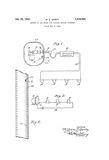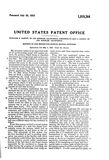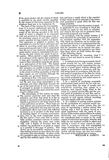


My invention relates to an improved method of synchronizing sound with motion pictures, the primary object being to eliminate inaccuracy in scoring sound upon motion picture film. The usual method in practice has been to project the picture on a screen and produce the sound in the correct tempo, the synchronizer being the leader of an orchestra or director of any sound, upon whose careful eye and ear accuracy depends. In the companion application filed by Roy E. Disney, Oct. 16, 1928, Serial Number 312,783, has been set forth a method and means for accomplishing the result attained by the invention set forth in the present application only to a less degree of perfection and it is the primary object of this invention to simplify and improve upon the method and apparatus of said first invention.
In said co-pending application has been disclosed the use of a dancing ball which appears to move up and down in accordance with the rhythm or tempo of the musical score which had been previously prepared for the picture as the film progresses during the projection of a picture. On this score was included scores for effect or trap men, whose purpose was to put in the noises or effects other than music. This method enabled a close following of the score by the individual musicians, and enabled them to concentrate on the music and effects, and eliminated the necessity of their trying to follow the action of the picture. This system was operated satisfactorily but it was found that the small ball was a difficult object for the conductor to follow.
From this process evolved a second system which consisted of a wide line drawn horizontally across the picture, which had an undulating action up and down on the picture. The advantage of this system over the first described insaid co-pending application was mainly in the facility with which the conductor could follow this waving band. Its use however proved rather cumbersome because of the fact that it was found almost impossible for the conductor to change the rythm during the progress of recording, due to the fact that the musicians were using unusual scores, and these required their entire attention.
[…]
| Id | 2130 |
|---|---|
| Availability | Free |
| Inserted | 2016-01-14 |